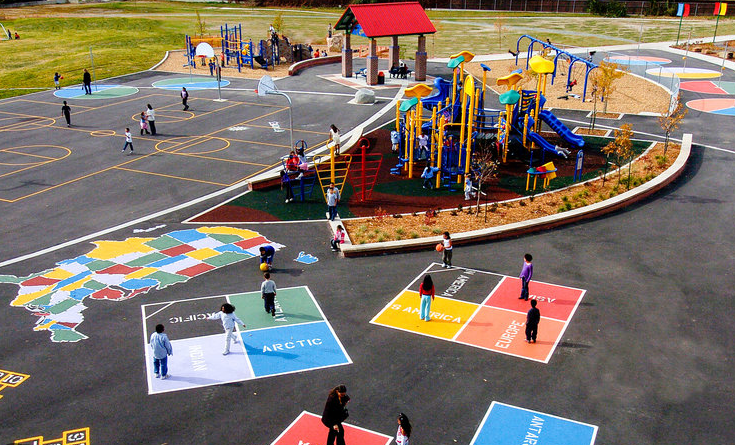Landscape playgrounds are transforming the way children interact with outdoor play environments. These play spaces are meticulously designed to blend naturally with the surrounding environment, providing a unique and engaging experience for children of all ages. The key features that make landscape playgrounds stand out include their integration with nature, use of sustainable materials, and emphasis on inclusive play.
Integration with Natural Elements
Landscape playgrounds stand out by incorporating natural elements directly into their design. This could include using the existing topography of the landscape, such as hills and valleys, to create interesting and challenging play areas. Natural features like rocks, water bodies, and native plants are often integrated to create a more engaging and interactive environment. For example, a playground might feature a stream that children can dam up or redirect, providing a dynamic interaction with water that changes with the seasons.
Sustainable and Eco-Friendly Materials
The choice of materials in a landscape playground is guided by sustainability and environmental friendliness. Recycled plastics, sustainably sourced wood, and locally quarried stone are common materials that not only reduce the playground’s environmental footprint but also blend seamlessly with the natural surroundings. These materials are chosen for their durability and safety, ensuring that the playground remains a safe and sustainable environment for years to come.

Inclusive and Accessible Design
Inclusivity is a hallmark of modern landscape playgrounds. These areas are designed to be accessible to children of all abilities, including those with physical disabilities. Features such as wide paths, ramped access to play structures, and sensory-friendly activities ensure that every child can enjoy the playground. This inclusive approach extends to the play equipment, which is often designed to provide various levels of challenge that cater to different ages and abilities, encouraging all children to explore and grow.
Educational Opportunities
Many landscape playgrounds are designed with an educational purpose in mind. They often incorporate elements that teach children about the natural world, such as gardens with edible plants, signage about local wildlife, and play structures that mimic natural habitats. These features provide children with hands-on learning experiences that are both fun and educational, fostering a deeper connection with the environment.
Community and Social Interaction
A unique aspect of landscape playgrounds is their ability to foster community interaction. These playgrounds are designed to be gathering spaces for families, providing comfortable seating areas and shaded spaces where parents can socialize while keeping an eye on their children. The layout often encourages cooperative play among children, which can help develop social skills such as sharing, negotiation, and teamwork.
Landscape playgrounds offer more than just a place to play; they provide a multifaceted environment that nurtures development, learning, and a connection to nature. By integrating natural elements, using sustainable materials, and focusing on inclusive design, these playgrounds create a distinctive and enriching outdoor experience for children. For more information on these innovative play areas, visit our detailed page on landscape playground.